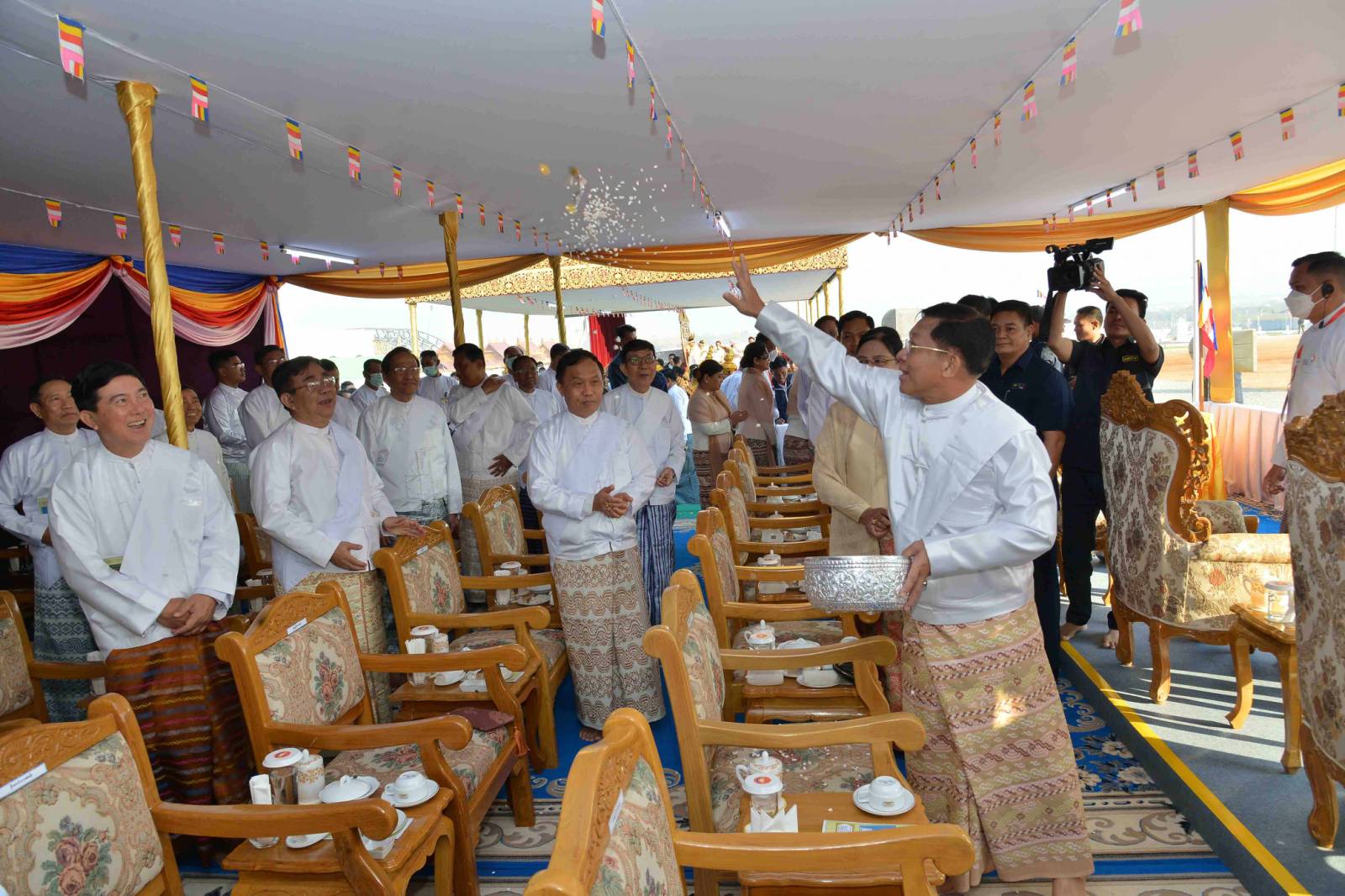Junta boss Min Aung Hlaing has imposed entrance and other fees on the colossal Buddha statute he had built in Naypyitaw, prompting criticism and mockery even from regime sympathizers in a country where paying homage to Buddha has always been free for its citizens.
The Buddha statue called “Maravijaya” has become the first pagoda in the Buddhist-majority country where citizens are charged to make a pilgrimage.
The entrance fee is just 1,000 kyats (the market exchange rate is about 3,600 kyats per US dollar) for both adults and children, but there are a host of additional fees. The fee to take photos with a smartphone camera is 5,000 kyats. The fee rises tenfold to 50,000 kyats for those using professional cameras and they have to pay 5,000 kyats for every additional 30 minutes of taking photos after their initial time limit is over. The parking fee is 20,000 kyats.

A visitor arriving by car who takes photos with a phone will have to pay 26,000 kyats, more than five times the daily minimum wage in Myanmar—4,800 kyats for an eight-hour shift.
The admission fee for a foreign national to visit Myanmar’s most famous pilgrimage site, Shwedagon Pagoda, is just 10,000 kyats, but the entry fee for foreign nationals at Maravijaya is US$ 10.
Aung Paing Min, a staunch supporter of the military’s proxy Union Solidarity and Development Party and close associate of former president Thein Sein, wrote on his Facebook page: “The fee is so high as it is 50,000 kyats plus 5,000 kyats for every 30 minutes for professional DSLR/Camcorders. But it is quite gross to charge 5,000 kyats for a phone camera. Please fix it, Phayar Dagar Gyi [a title used to address someone who has pagodas built]. I am also meant to pay 5,000 kyats for the phone.”
The statue was consecrated on August 1, and entry was free from August 8 to 17. With the announcement of admission fees, the regime extended the free-entry period until August 19. It will start collecting admission fees on August 20, saying the money will be used for maintenance of the statue.
Han Nyein Oo, a notorious junta lobbyist known for sharing the addresses of dissidents online and inciting their arrests, wrote: “How nice it would be if [pilgrims] were allowed to visit and pay homage for free without needing to pay an admission fee. Phayar Dagar Gyi will definitely gain greater merit.”
A satirical cartoon reads “Yasodhara, bring 1,000 kyats if you want to see Buddha. It is 2,000 kyats if you bring Rahula along.” Yasodhara was the wife of Prince Siddhartha before he attained enlightenment, and Rahula was their son.
“Maravijaya” means conquering Mara, which is equivalent to Satan in Buddhism. The statue’s attributes are closely connected with the number nine, which is considered auspicious in Burmese numerology, and is a talisman of Myanmar generals.
The image’s combined weight of 5,292 tons has numerological significance, as the individual digits can add up to two nines, while the throne’s height of 18 feet (nine doubled) and the statue’s height of 63 feet also adds up to the number nine. The statue is surrounded by 720 stone stupas.

The Buddha statue was carved out of a marble block donated by former military dictator Than Shwe. Current and former generals, including former military spy chief Khin Nyunt, made donations for construction of the Buddha statue.
A few weeks before the consecration of the statue, many old and new cronies contributed around 40 billion kyats to its construction.
While it is not clear how the regime will use those billions of kyats, it is attempting to squeeze money out of pilgrims who are suffering from economic turmoil, critics say.
Another military supporter, Kyi Win, wrote on his Facebook page: “Everyone has a phone today, and the fee is 5,000 kyats for phone [photos]. The site is [far] and only accessible by car, and the fee is 20,000 kyats for a vehicle. I only have only word. It is extremely gross.”

















